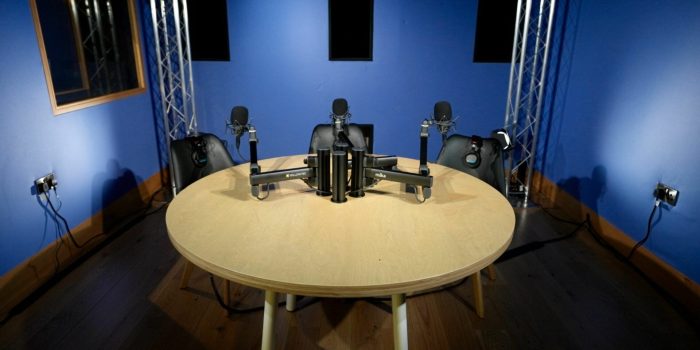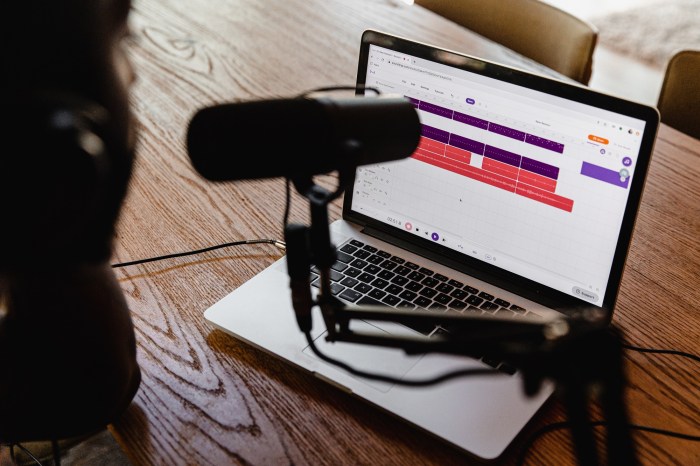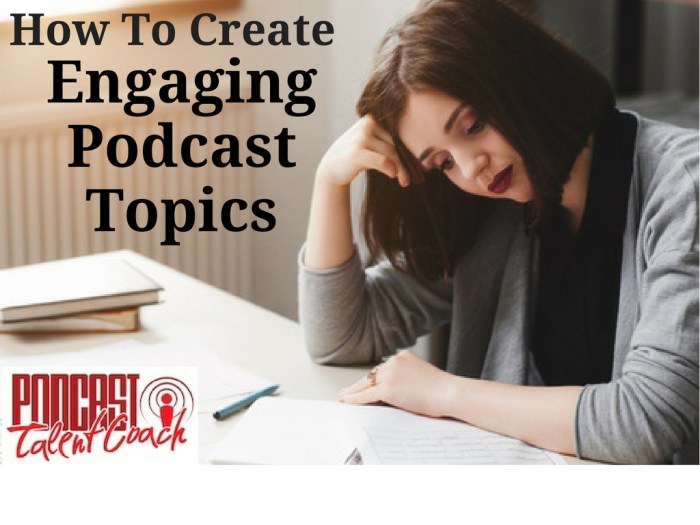Sound design is paramount to a successful podcast. It’s more than just clear audio; it’s about crafting an immersive listening experience that captivates your audience and keeps them coming back for more. This guide explores five key strategies for designing soundscapes that enhance storytelling, build emotional connections, and ultimately elevate your podcast’s impact.
From understanding your target audience’s sonic preferences to mastering audio editing techniques, we’ll delve into practical steps to transform your podcast from merely audible to truly unforgettable. We’ll cover choosing the right music, incorporating sound effects, and optimizing audio quality for a professional, polished sound across all listening platforms.
Understanding the Podcast Landscape and Target Audience

Effective sound design hinges on a deep understanding of the podcasting world and, crucially, your listeners. Ignoring this fundamental aspect can lead to a disconnect between your creative vision and audience engagement, resulting in a less impactful podcast. Success lies in tailoring your audio experience to resonate with your specific target demographic.
Successful podcasts across various niches demonstrate distinct sonic characteristics. True crime podcasts, for example, often utilize atmospheric soundscapes, suspenseful music, and a clear, authoritative voiceover to cultivate a sense of mystery and intrigue. Conversely, comedy podcasts might employ upbeat music, sound effects for comedic emphasis, and a more casual, conversational tone. Educational podcasts often prioritize clarity of speech, minimal background music, and the incorporation of relevant sound effects to illustrate concepts. These examples highlight the importance of aligning your sonic palette with the genre and overall tone of your podcast.
Identifying Target Audience Listening Preferences
Identifying your target audience’s listening habits and expectations involves a multifaceted approach. Begin by defining your ideal listener through thorough market research. This includes analyzing existing podcasts in your niche, examining listener reviews and comments, and conducting surveys or focus groups to understand preferences for sound design elements. Consider factors such as age, listening habits (e.g., commuting, at home, during exercise), preferred devices (e.g., smartphones, smart speakers), and their familiarity with various audio styles. This data will inform your decisions about music selection, sound effects usage, and overall audio mix. For example, a podcast targeting a younger audience might benefit from more contemporary music and sound effects, whereas an older demographic might prefer a cleaner, more classic approach.
Creating Listener Personas
Creating detailed listener personas is a powerful tool for guiding sound design choices. A persona is a fictional representation of your ideal listener, incorporating demographic information, listening habits, and preferences. For example, you might create a persona named “Sarah,” a 30-year-old professional who listens to podcasts during her commute, prefers true crime podcasts, and enjoys atmospheric soundscapes with minimal distracting music. Knowing Sarah’s preferences allows you to tailor your sound design accordingly, focusing on elements that resonate with her specific listening experience. This approach allows for a more targeted and effective sound design strategy.
Sound Design Elements and Diverse Audiences
Different sound design elements cater to diverse audiences in various ways. Music, for instance, sets the mood and tone. Upbeat, energetic music suits comedy podcasts, while ambient soundscapes are effective for true crime or narrative podcasts. Sound effects add context and emotional depth; a podcast about nature might incorporate bird songs and rustling leaves, while a cooking podcast could include the sounds of sizzling food. The voice itself is a crucial element; a clear, concise voice is important for educational podcasts, while a more conversational, relatable voice might be preferred for interview-based shows. By carefully considering the interplay of these elements, you can create a sonic experience that resonates with your target audience and enhances their overall listening experience. For example, a podcast aimed at children would utilize brighter, more playful music and sound effects, while a podcast aimed at professionals might employ a more sophisticated and understated soundscape.
Crafting a Compelling Soundscape

A podcast’s soundscape is more than just background noise; it’s a crucial element shaping listener experience and engagement. A well-designed soundscape enhances the narrative, evokes emotion, and ultimately, creates a memorable listening journey. Consider your podcast’s theme and target audience when choosing the sonic palette. A carefully crafted soundscape will seamlessly integrate with your content, enhancing rather than distracting from the spoken word.
The right sonic environment significantly impacts listener engagement. Think of it as setting the stage for your story. A poorly chosen soundscape can be jarring and detract from the message, while a well-crafted one can immerse the listener and elevate the overall experience. This section will explore practical techniques for creating a compelling and consistent soundscape across your podcast episodes.
Sonic Palettes and Their Emotional Impact
Different sonic palettes evoke distinct emotions and complement various podcast themes. The choice of sounds significantly impacts the overall feel of your podcast. Consider the following examples:
| Sonic Palette | Sound Examples | Emotional Impact | Podcast Themes |
|---|---|---|---|
| Upbeat | Bright acoustic guitar, playful percussion, chipper sound effects | Joyful, energetic, optimistic | Comedy, lighthearted interviews, travelogues |
| Mysterious | Low, resonant drones, ambient textures, subtle sound effects (e.g., wind, rain) | Intrigued, suspenseful, contemplative | True crime, horror fiction, investigative journalism |
| Dramatic | Orchestral swells, powerful percussion, tense sound effects (e.g., thunder, creaking doors) | Intense, emotional, powerful | Documentaries, historical narratives, dramatic readings |
| Calm and Reflective | Gentle piano melodies, ambient nature sounds (e.g., birdsong, flowing water), soft chimes | Peaceful, serene, meditative | Meditation podcasts, nature documentaries, relaxation guides |
The Role of Music in Podcast Production
Music plays a vital role in setting the mood and pacing of a podcast episode. It provides emotional cues, guides the listener through transitions, and underscores key moments in the narrative. For example, using upbeat jazz music might energize a comedic interview, while a somber piano piece could enhance a reflective narrative. Consider the following music styles and their typical emotional impacts:
Classical music often evokes feelings of grandeur, sophistication, or nostalgia, depending on the piece. Indie folk music can create a feeling of intimacy and authenticity, while electronic music can range from energetic and driving to ambient and ethereal, depending on the subgenre. The careful selection of music is paramount to maintaining a cohesive and emotionally resonant listening experience.
Effective Incorporation of Sound Effects
Sound effects are powerful tools for enhancing storytelling and creating atmosphere. They can add realism, emphasize key moments, and build suspense. For instance, a subtle ticking clock could build tension in a mystery podcast, while the sound of waves crashing could evoke a sense of peace in a nature documentary. However, sound effects should always be used judiciously; overuse can be distracting and overwhelming. The key is to use them strategically to enhance, not overpower, the narrative.
Maintaining Sonic Consistency Across Episodes
Creating a standardized sound design template ensures sonic consistency across multiple podcast episodes. This template should include specifications for music, sound effects, intro/outro themes, and overall audio levels. Using a consistent template streamlines the production process and ensures a cohesive listening experience for your audience. A well-defined template will also aid in collaboration, ensuring everyone involved in the production process understands the sonic identity of the podcast. This contributes to a professional and polished final product.
Optimizing Audio Quality and Editing

High-quality audio is paramount for a successful podcast. Listeners are more likely to engage with a podcast that sounds clear, professional, and free from distracting noises. This section details the crucial steps involved in optimizing your audio quality and performing effective editing. Proper audio editing is not just about removing mistakes; it’s about shaping the sonic landscape to enhance the listener experience.
Audio Editing Techniques for Improved Clarity and Noise Reduction
Effective audio editing involves a multi-step process aimed at enhancing clarity and removing unwanted noise. This process typically begins with noise reduction and then moves towards equalization and compression to refine the overall sound. First, identify and isolate any problematic audio sections, such as background hums, clicks, or pops. Many audio editing programs offer noise reduction tools that can automatically identify and reduce these issues. Next, focus on equalization. This involves adjusting the frequency balance to emphasize certain frequencies and de-emphasize others. For example, boosting the mid-range frequencies can enhance vocal clarity, while reducing harsh high frequencies can make the sound less fatiguing. Finally, carefully examine the audio for any remaining imperfections and manually correct or remove them. This might involve using tools like the “fade in” and “fade out” functions to smooth transitions between segments.
Podcast Mastering for Optimal Sound Quality
Mastering is the final stage of audio production, where the overall loudness, dynamics, and frequency balance of your podcast are optimized for various listening platforms. This ensures consistency across different devices and listening environments. The mastering process typically involves adjusting the overall loudness to a target level, often using techniques like LUFS (Loudness Units relative to Full Scale) metering. This ensures that your podcast isn’t too quiet or too loud compared to other podcasts. Next, fine-tune the frequency balance and dynamics to achieve a polished and consistent sound. This may involve subtle adjustments to equalization and compression to address any remaining issues in the audio. Finally, carefully check the mastered audio across different playback systems (headphones, car stereo, computer speakers) to ensure consistent quality.
Effective Use of Dynamic Range Compression
Dynamic range compression reduces the difference between the loudest and quietest parts of your audio. This creates a more consistent and even listening experience, preventing sudden loud peaks or quiet dips that can disrupt the flow. It’s crucial to use compression judiciously; over-compression can result in a lifeless and unnatural sound. A good starting point is a compression ratio of around 4:1 with a threshold set to gently reduce the loudest peaks. Experiment with different settings to find the optimal balance between dynamic range and evenness. Remember to listen carefully to the compressed audio to avoid artifacts or unwanted side effects. For example, a news podcast might benefit from a higher compression ratio to ensure even volume across different segments, whereas a narrative podcast might use a lower ratio to preserve the dynamic range and emotional impact.
Essential Audio Editing Software and Plugins
Choosing the right software and plugins is essential for effective podcast sound design. The options available offer a range of features and price points to suit different needs and budgets.
- Audacity: A free, open-source audio editor with a wide range of features, ideal for beginners.
- Adobe Audition: A professional-grade audio editor with advanced features for noise reduction, equalization, and mastering.
- Reaper: A powerful and versatile DAW (Digital Audio Workstation) offering extensive audio editing and mixing capabilities.
- iZotope RX: A suite of powerful plugins specializing in audio repair and restoration, excellent for noise reduction and audio cleanup.
- Waves plugins: A wide range of high-quality plugins for equalization, compression, and other audio processing tasks.
Closure

By thoughtfully considering your audience, crafting a compelling soundscape, and mastering the technical aspects of audio production, you can significantly enhance your podcast’s appeal. Remember, sound design is an art form; it’s about creating an emotional journey for your listeners. Experiment, refine your techniques, and let your creativity shine through to produce a truly captivating auditory experience.